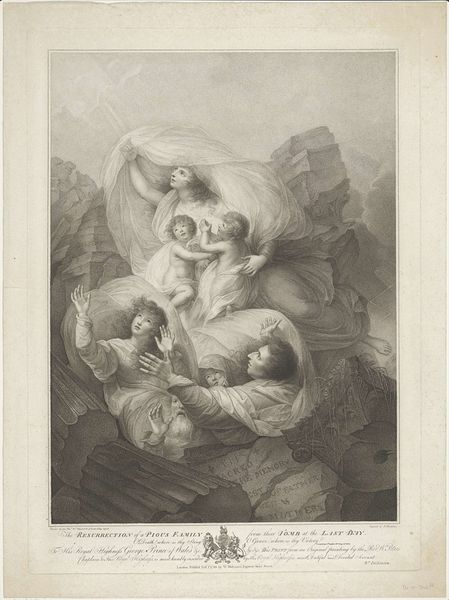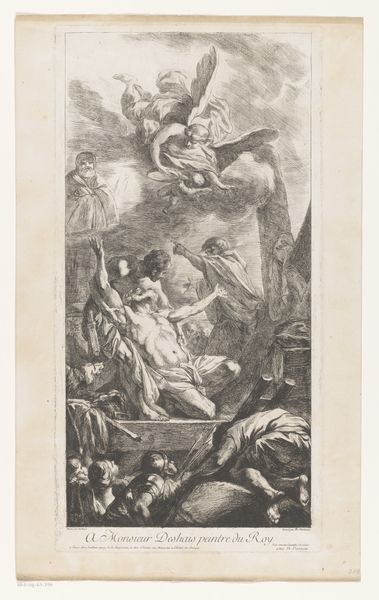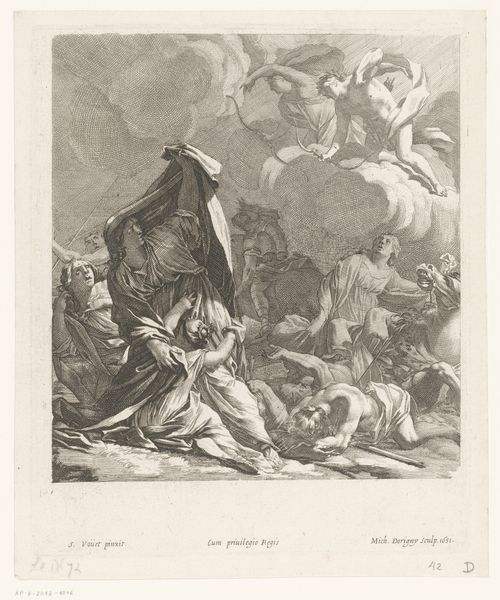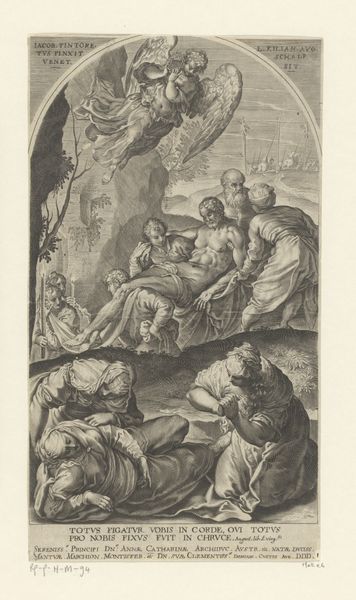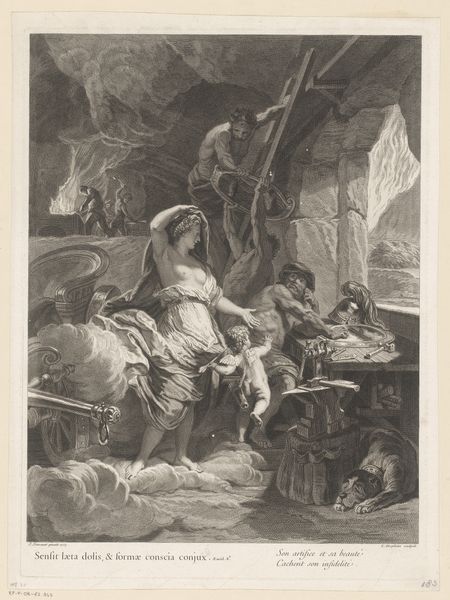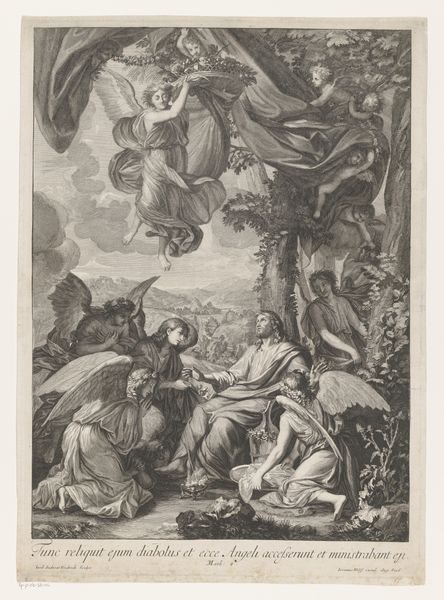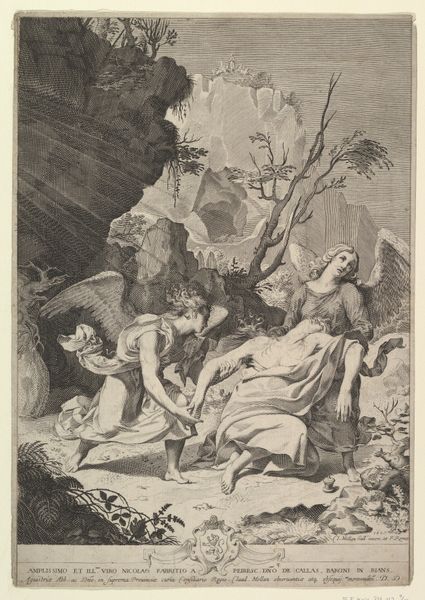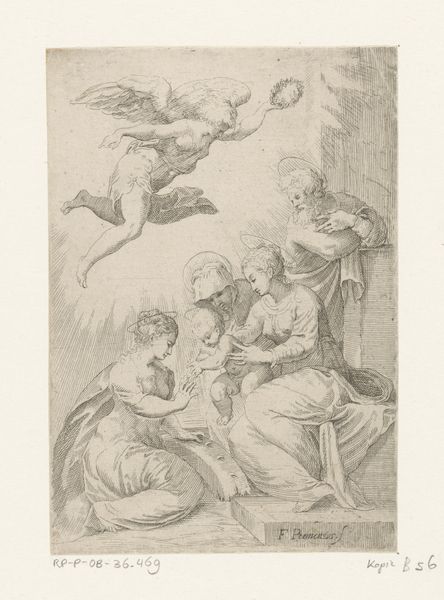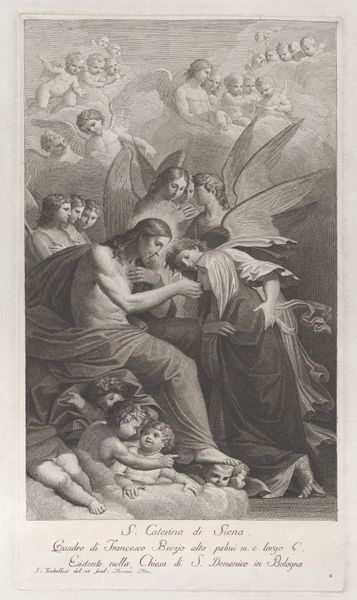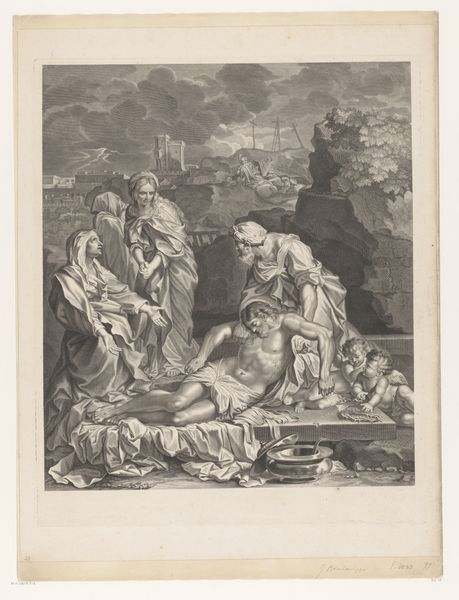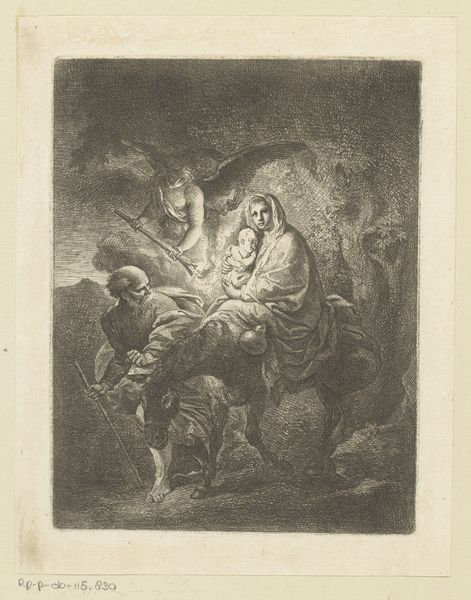
Allegorische voorstelling met figuren tussen brokstukken 1791
0:00
0:00
gottfriedarnoldlehman
Rijksmuseum
drawing, paper, engraving
#
drawing
#
neoclacissism
#
allegory
#
figuration
#
paper
#
form
#
line
#
history-painting
#
engraving
Dimensions: height 340 mm, width 252 mm
Copyright: Rijks Museum: Open Domain
Editor: This engraving by Gottfried Arnold Lehman from 1791, titled *Allegorische voorstelling met figuren tussen brokstukken,* shows people amongst ruins. It feels like a depiction of chaos after some monumental event, but with a strange sense of... theatricality? How do you interpret this work, especially considering its historical context? Curator: Given the timeframe and the prevalence of Neoclassicism, we're likely looking at an allegorical commentary on societal upheaval, possibly linked to the revolutionary sentiments brewing in Europe. Notice how Lehman uses the visual language of classical ruins—a motif popularized through engravings like Piranesi's—but places figures in contemporary dress within them. This immediately raises questions about the artist's intended audience. Editor: So, the ruins aren’t necessarily meant to represent, say, the fall of Rome literally? Curator: Not literally, no. Instead, they're symbols of collapsing orders. The "debris" could represent outdated institutions, monarchical power, or societal norms being questioned by the Enlightenment. And that central figure shielding the children -- perhaps she's an allegory for prudence, or even the ‘new’ Republic protecting future generations from the past. Editor: I see. The faces certainly convey a sense of terror, but that sheltering figure offers some hope, too. Does the style itself - this linear, almost austere engraving - also contribute to the message? Curator: Absolutely. The line-based style lends a clarity, a certain *didacticism,* aligning with Neoclassicism's aim to present moral lessons, to make legible statements about civic virtue, responsibility and governance. Remember, prints were relatively accessible. Works like this were powerful tools for shaping public opinion. Lehman asks us: what do we save from the ruins of the old world, and what kind of world are we building for our children? Editor: It’s fascinating to consider how a work like this acted as a visual form of political discourse. I’ll never look at ruins in art the same way again! Curator: Precisely. By engaging with the artwork's cultural background, it enables the viewer to critically asses their present situation and future aims.
Comments
No comments
Be the first to comment and join the conversation on the ultimate creative platform.
